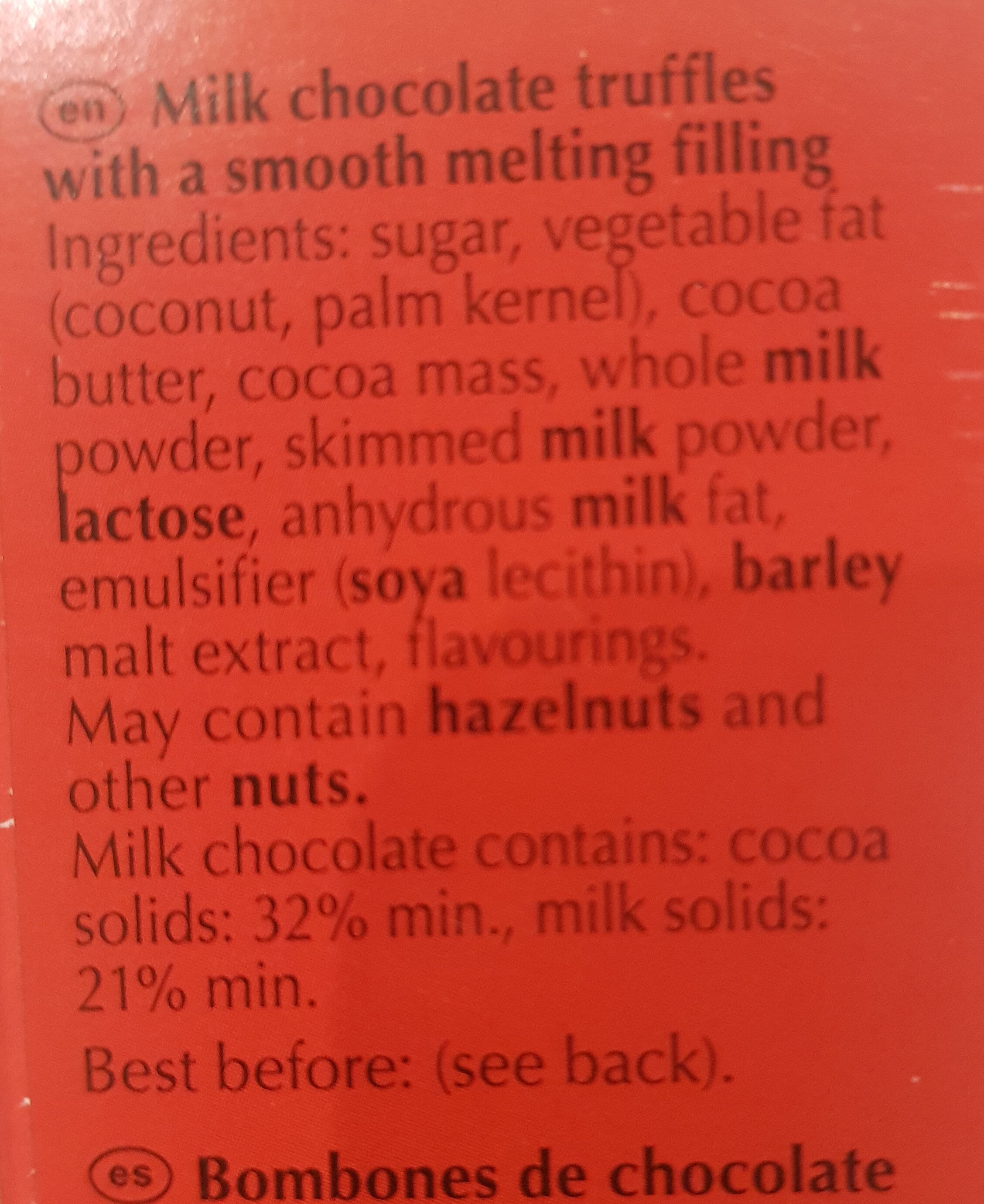Lindor milk chocolate - Lindt
Aquesta pàgina del producte no està completa. Podeu ajudar a completar-la editant-la i afegint-hi més dades a partir de les fotos ja disponibles, o fent-ne més amb l'aplicació de androide o iPhone / iPad. Gràcies!
×
Codi de barres: 8003340091464 (EAN / EAN-13)
Empaquetament: en:Tray, en:Card-box, en:Mixed plastic-film
Marques: Lindt, Lindt & Sprüngli
Categories: Snacks, Aperitius dolços, Cacau i derivats, Llaminadures, Caramels de xocolata, Bombons
Etiquetes, certificacions, premis: Vegetarià
Països on es va vendre: Espanya
Matching with your preferences
Entorn
Empaquetament
Transport
Espècies amenaçades
Report a problem
Fonts de dades
Producte afegit per elcoco
Última modificació de la pàgina del producte per inf.
La pàgina del producte, també editada per averment, date-limite-app, elcoco.40b8ea9cade4e1cd1b630f05ae23ffbe, moon-rabbit, musarana, openfoodfacts-contributors, packbot, roboto-app, swipe-studio, telperion87.




